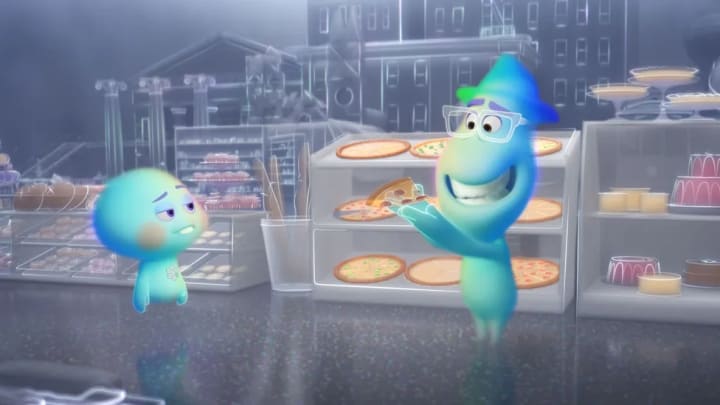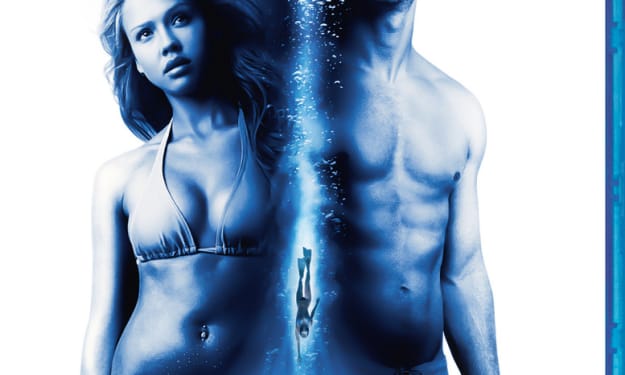Pixar’s Soul is ‘a gorgeous muddle’
The latest animation from the creators of Inside Out and Up ponders nothing less than the meaning of life itself. It’s beautiful, but fails to hit its target

These days, Pixar is no longer synonymous with the finest in American animation; other studios turn out more entertaining and more technically impressive cartoons on a regular basis. But when it comes to mind-expanding concepts and existential enquiries, Pixar is still in a league of its own. Competitors may content themselves with rebooting The Addams Family or Scooby Doo. Pixar examines emotion (Inside Out), creativity (Ratatouille) and play (Toy Story). More often than not, its films are concerned with how we can lead meaningful lives – but their latest cartoon is the first to make that philosophical theme explicit. Directed by Pete Docter, and co-directed and co-written by Kemp Powers, Soul ponders nothing less than the purpose of existence itself. It isn’t as profound as it was clearly intended to be, and its breezy depiction of bustling city life can’t help but feel anachronistic in the middle of a pandemic. But still, which other studio would dare to attempt what Soul is going for?
It’s also unusual in that its main character, Joe (Jamie Foxx), is African-American, and the end credits include a long list of “cultural advisers” who ensured that every detail of his personality and surroundings is accurate. Joe conducts a ramshackle band in a notably multi-cultural New York middle school, but, even though he is well into middle age, judging by his paunch and his greying moustache, he still believes that he can make it as a jazz pianist. His seamstress mother (Phylicia Rashad) wants him to accept the school’s offer of a full-time job, but just as he is about to sign on the dotted line, a former pupil (Questlove), now the drummer for a famous saxophonist (Angela Bassett), invites him to fill in for the combo’s usual piano player. Joe’s successful audition is the best moment of his life. Unfortunately, it may also be the last. In a lovely, Bugs Bunny-worthy comic set piece, he is shown staggering in a delighted daze through the city streets, unaware that he is narrowly avoiding falling bricks, scattered banana skins and speeding buses. And then he plummets down a manhole and into the afterlife.
The New York scenes have the photorealistic textures and warm, honeyed lighting that you expect from Pixar – but which are still astounding to behold. The chipped paint on a railing and the grease on a pepperoni pizza have never seemed so magical – and that’s the point. One of the film’s messages is that we should appreciate everyday wonders. But it’s when Soul leaves the physical realm that the animators let loose, whipping up a surreal landscape reminiscent of the cerebral netherworld from Docter’s last Pixar cartoon, Inside Out. Joe becomes a small, cuddly, pale blue ghost-like figure, but he gets to keep his hat and glasses. A cosmic conveyor belt, much like the escalator in A Matter of Life and Death, is carrying him up through the void to an all-enveloping, faintly threatening bright light: the film is careful not to mention any specific religions or deities. But Joe is determined not to miss his shot at jazz stardom, so he scrambles away from the Great Beyond, only to find himself in the Great Before. This is a rolling pink celestial meadow where newly minted souls are assigned personalities and then sent down to Earth to connect with human bodies. Joe, of course, is hoping to reconnect with his own human body, but other spirits aren’t so keen. In particular, soul number 22 (Tina Fey) is reluctant to become a living, breathing person. Spectral mentors from Abraham Lincoln to Gandhi have had a go at persuading her, but Earth seems so noisy and grubby that she prefers to float around the Great Before.

When Joe gets the job of finding the cynical 22’s ‘spark’, he realises that... well, never mind what he realises. It’s all too contrived and complicated to explain. As in Inside Out, the otherworldly rules and regulations are more suited to a video game than a film, but suffice it to say that there are some extra-dimensional bureaucrats, all named Jerry, who look like Picasso squiggles and talk like they’re on The Good Place. There is a dark, sandy wasteland where hulking lost souls lumber around until they are lassoed by a psychedelic galleon steered by a hippy-voiced Graham Norton. And then, after nearly an hour, there is a body-swap sequence in which 22’s consciousness inhabits Joe’s comatose body in a New York hospital, and Joe’s consciousness inhabits a cat. Don’t ask me where the cat’s consciousness went, because I haven’t a clue.
It may not be wholly satisfying, but it is exhilarating in its ambition
It all gets a bit much. Soul has the headache-inducing structure of a film that has been taken apart and reassembled many times by many people, all of whom have contributed plot points and conceits of their own. There is definitely a classic story in there somewhere, but it’s almost buried by all the ideas that have been piled on top of it. Docter could have made a bittersweet musical about a frustrated teacher’s love of jazz, or a zany metaphysical comedy about what goes on behind the scenes of creation. He could even have made a decent farce about a man in a cat’s body. But because he tries to do everything at once, he doesn’t give either the astral plane or the real world its due. Ultimately, you don’t care about Joe or 22, because you’re too distracted by all the questions that Soul doesn’t get around to answering. Doesn’t your personality come from your genes and your experiences, rather than supernatural programming? Why shouldn’t 22 be allowed to stay in the Great Before? Who is the “Lisa” who gets namechecked and then forgotten? And who decided to cast a chirpy Irish chat-show host as a spaced-out, burnt-out bongo-playing New Yorker?
The more you think about it, the more of a muddle Soul seems to be. But what a gorgeous muddle it is. It may not be wholly satisfying, but it is exhilarating in its ambition, superbly animated, and brimming with affection for its characters and their milieu. And because it visualises such big, abstract concepts, it is destined, like Inside Out, to be cited in countless academic essays about what makes humans tick. It doesn’t hit its target, but its target is the key to life, the universe, and all that jazz. You can’t aim much higher than that.
About the Creator
Cindy Dory
When you think, act like a wise man; but when you speak, act like a common man.






Comments
There are no comments for this story
Be the first to respond and start the conversation.